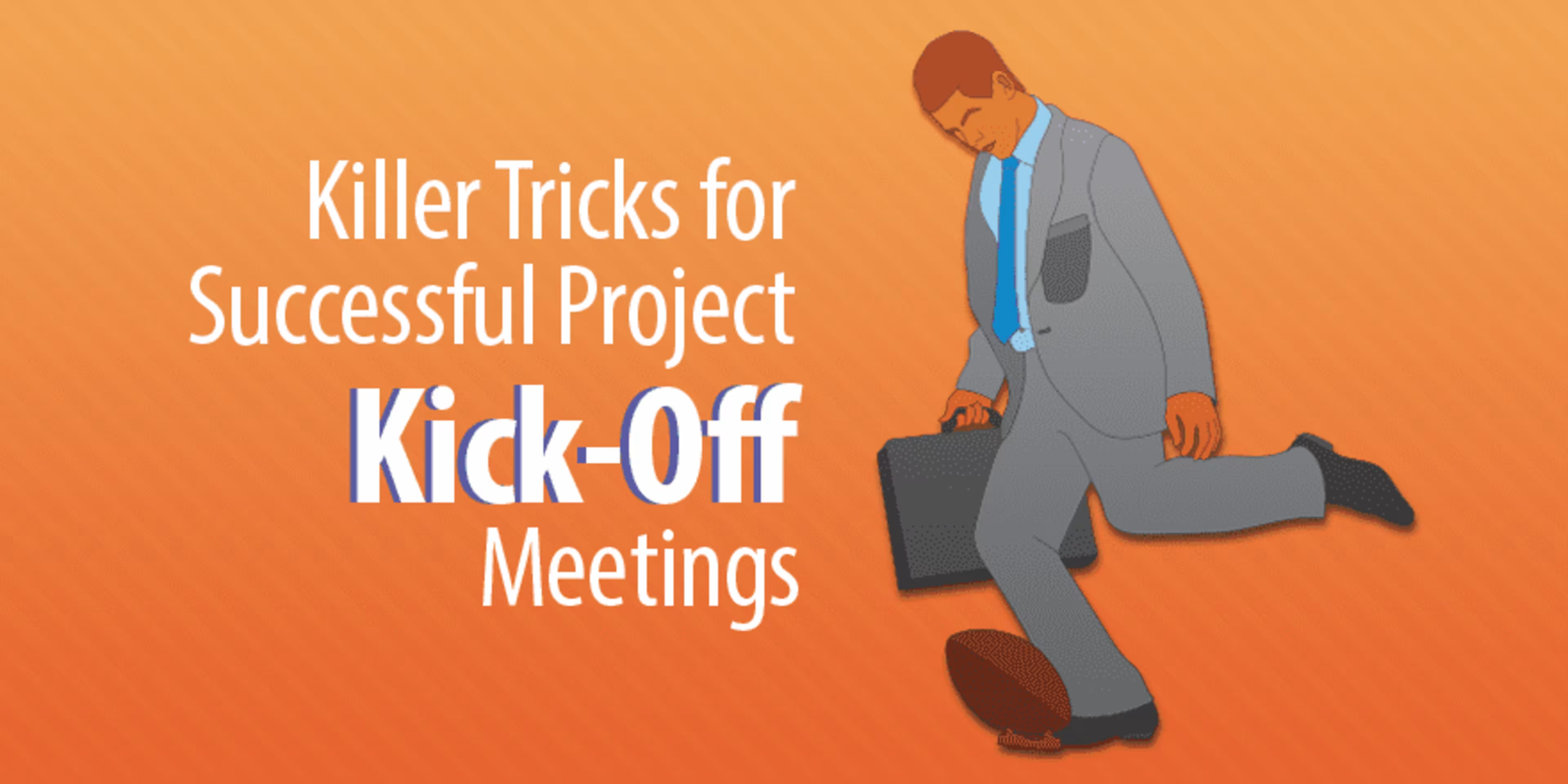A project kick-off meeting is more than a ritual or a ceremony; its success sets the tone for the project. For a project manager, it’s the one-time, critical opportunity to share what is expected of team members, how they should deliver, and when they should complete their tasks. It, along with good project management software, provides the guidelines for on-time project completion and high-quality deliverables.
A well-prepared kick-off meeting can make a big difference in the project’s execution and completion. Here are the six important steps to ensure your project kick-off meeting is a success.

1. Introduce team members and go over the project charter
The introductory part of the kick-off meeting should build rapport among stakeholders involved. Introduce their names, positions, and areas of expertise. Go over information in the project charter so that the team members understand the purpose, the project scope, the major deliverables, the risks, the assumptions, the budget, and the due date.
Use a welcoming and positive tone as much as possible, to ensure the project culture is positive and constructive from the beginning.
2. Discuss roles and responsibilities
Discuss the roles and responsibilities of every team member. Explain the project to them in plain language, then get into details. In a technical project, specific jargon is expected, but those should be reserved for after the end product is made clear to everyone in the meeting.
Be clear on who is accountable for each role. Being accountable means more than being responsible; it also means being answerable for the actions or inactions of yourself or anyone else on the team.
3. Go over due dates and timelines
Go over deadlines and timelines. Use visuals, like Gantt charts and graphics, to make the presentation easier to grasp. There are often short-term projects within the primary project, and they might come with a different completion time. If you want to speed things up, there is even Gantt chart software to help you get started.
Explain how the project should be executed during in-between shorter projects, such as adopting supportive roles or temporarily assisting other team members.
4. Explain the procedures
Explain how the project manager will be working with the team members, starting from scheduling to requesting changes. Emphasize the importance of understanding the procedures to maintain the workflow in the project.
To mitigate common problems with change requests, for example, show your stakeholders your preferred change request document. Explain, in detail, the steps to get approval, from updating the log, assessing the request, and accepting the approval or the rejection.
5. Describe risk areas and contingencies
Risk areas and contingencies can be confusing to team members, so it’s best to present your project risk management at the kick-off meeting to prevent chaos in the event of a future problem.
Describe the possible risks, both positive and negative, and what is expected from team members should they occur. Explain the contingency plans to avoid and mitigate those risks. Also, explain what to do when an emergency erupts as most likely there are impact issues that would require immediate handling. Address the task of creating a risk response team.
6. Answer questions
Hold a question-and-answer session at the end of the meeting. Asking for clarification and feedback from your team is a great opportunity to take note of issues that might have been overlooked. Sometimes, a small issue can cause a major blockage in the project execution. Encourage all team members to share their concerns before the project starts proactively. After all, it is better to address them before they occur.
The Strong Closing
Last but not least, define the key success factors before closing the kick-off meeting. Close the meeting with a positive and enthusiastic tone, just like when you started it. Summarize the important points and invite team members to come to you whenever they have any question or encounter any problem before and during the project execution. A successful project kick-off meeting is a necessary precursor for creating self-sufficient teams.
Do you have any tips for running a killer project kick-off meeting? If so, please share them in the comments!